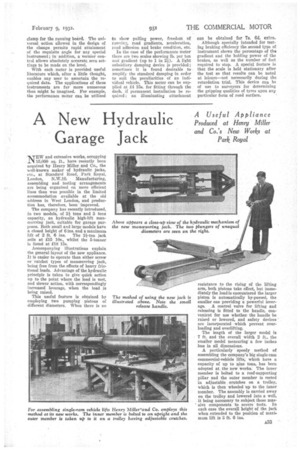Instruments for Checking Vehicle Performance
Page 58

Page 59

If you've noticed an error in this article please click here to report it so we can fix it.
Tapley Meters which Record Standards of Efficiency Upon the Road
CHASSIS manufacturers, repairers and maintenance engineers, to name but a few, always require to know the practical results of their work in terms of the road performance of a vehicle. To obtain data usually calls for the employment of tapes, stop watches, etc.,
and, above all, experienced operators upon whose integrity complete reliance can be placed. An .optional course lies in the use of suitable instruments, such as the performance and braketesting meters sold by Tripley and Co., Belvidere Works, Totton, Southampton.
Either type, in the form suitable for mounting on any vehicle, is priced at 16 6s., complete in leather ease and with a suitable form of mounting bracket. For the standard performance meter a clamp bracket for attachn,ent to the facia is generally the most satisfactory, whilst the brake-testing outfit includes a special quick-acting clamp for the running board. The universal action allowed in the design of the clamps permits rapid attainment of the requisite angle for any special instrument ; in addition, a vernier control allows absolutely accurate. zero settings to be made on the level.
With each meter is provided useful literature which, after a little thought, enables any user to ascertain the required data. The applications kif these instruments are far more numerous than might be imagined. For example, the performance meter can be utilized to show pulling power, freedom of runnir17„ road gradients, acceleration, road adhesion and brake condition, etc.
In the case of the performance meter there are two scales showing lb. per ton and gradient (up to 1 in 21). A light subsidiary damping device is provided ; sometimes it is found desirable to amplify the standard damping in order to suit the peculiarities of an individual vehicle. This meter can be sup plied at 15s. for fitting through the dash, if permanent installation be required; an illuminating attachment
can be obtained for 7. 6d. extra.
Although specially intended for testing braking efficiency the second type of instrument shows the percentage of the gradient and the holding power of the brakes, as well as the number of feet required to stop. A special feature is that the scale is held stationary after the test so that results can be noted at leisure—not necessarily during the retardation trial. This device can be of use to surveyors for determining the gripping qualities of tyres upon any particular form of road surface.




























































































